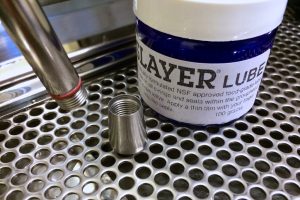5 Tips From The Pros For Perfect Installation of Seals
Apr 9, 2019
 Having a precision manufactured seal produced for your application is the first step to getting a reliable, competent part. However, faults which occur in the fitting of such seals could lead to failure, regardless of the quality of the seal itself.
Having a precision manufactured seal produced for your application is the first step to getting a reliable, competent part. However, faults which occur in the fitting of such seals could lead to failure, regardless of the quality of the seal itself.
For perfect installation of your seals every time, here are five tips from our experts to help you get it right.
- Clean the seal and installation tools
Working in a clean environment can help you give your seal the best chance of a reliable, long life. Dust and particulate that becomes trapped in the joint at the time of installation will affect performance massively. Ensure the seal itself is clean and clear of debris, using a lint free cloth to clean it. Ensure all tools being used in the installation and cleaned thoroughly too.
- Protect it from sharp edges
Being damaged during installation could lead to seal failure, so check the assembly for any sharp edges or imperfections. Remove any grease and grime from the surface too, again using a lint free cloth to do the job.
- Lubricate the seal and the sealing path
The majority of seals need to be fully lubricated prior to installation. There are a range of lubricants available, from petroleum based products to fluorocarbon fluid. The right lubricant for your seal will depend on the elastomer used for the seal itself. Talk to your expert at NES if you’re unsure what to use.
- Warm up the seal
Heating the seal slightly will improve elasticity and make installation much easier. This can be done by soaking the seal in warm lubricant but be sure to stay within the temperature tolerances for that material. Never put a seal in a microwave to warm it; just a few seconds can overheat an elastomer. Don’t heat it in a stretched state, as this could cause crosslinking and misshape the seal permanently. Once warm, don’t overstretch the seal while you are installing it.
- Use the right tools
Attempting to install a precision seal with the wrong tools can cause dents and damage to the seal itself. Any imperfections in the seal at this stage will be exacerbated once it’s under pressure, increasingly the risk of early seal failure. Use the appropriate tools for the job and take your time over installation to protect the seal’s integrity.
For more help on seal installation, as well as advice on custom made seals for your business, talk to the experts here at NES.
